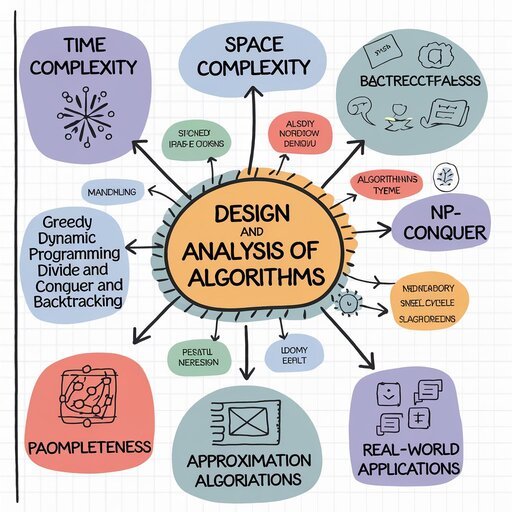
Asymptotic notations represent a fundamental mathematical framework used across computer science, complexity theory, and mathematics to describe the limiting behavior of functions as their input values approach certain limits, particularly infinity. These notations provide a standardized method for analyzing and comparing the efficiency of algorithms by characterizing their growth rates while abstracting away implementation-specific details and constant factors. The family of asymptotic notations, collectively known as Bachmann–Landau notation, includes several distinct but related symbols: Big O (O), Big Omega (Ω), Big Theta (Θ), little o (o), and little omega (ω), each serving specific purposes in bounding function behavior from above, below, or both directions. Understanding these notations is crucial for algorithm analysis, as they enable computer scientists to make meaningful comparisons between different algorithmic approaches and predict their scalability characteristics as problem sizes increase.
Big O notation serves as the most widely recognized member of the asymptotic notation family, providing an upper bound on the growth rate of a function. When we write f(n) = O(g(n)), we indicate that the function f(n) grows no faster than g(n) as n approaches infinity, up to a constant factor. The formal mathematical definition states that f(n) = O(g(n)) if there exist positive constants c and n₀ such that f(n) ≤ c·g(n) for all n ≥ n₀ This definition ensures that beyond a certain point (n₀), the function f(n) is bounded above by a constant multiple of g(n).
Big Omega (Ω) notation provides the complementary perspective to Big O by establishing lower bounds on function growth rates. When we express f(n) = Ω(g(n)), we assert that the function f(n) grows at least as fast as g(n) asymptotically. The formal definition requires the existence of positive constants c and n₀ such that f(n) ≥ c·g(n) for all n ≥ n₀, ensuring that beyond a certain threshold, the function maintains a minimum growth rate. This notation proves particularly valuable when establishing best-case performance guarantees or proving that certain problems require a minimum amount of computational resources.
Big Theta (Θ) notation represents the most precise form of asymptotic analysis by providing both upper and lower bounds simultaneously, creating what is known as an asymptotically tight bound. When we write f(n) = Θ(g(n)), we assert that the function f(n) grows at the same rate as g(n), meaning it is bounded both above and below by constant multiples of g(n). The formal definition requires the existence of positive constants c₁, c₂, and k such that 0 ≤ c₁g(n) ≤ f(n) ≤ c₂g(n) for all n ≥ k, effectively sandwiching the function between two scaled versions of g(n).

Recursion and recurrence relations form the backbone of modern computational theory and mathematical analysis, providing frameworks for defining self-referential structures and analyzing sequential dependencies. These concepts enable the decomposition of complex problems into manageable subproblems while offering precise mathematical tools for modeling growth patterns and algorithmic efficiency. From the Fibonacci sequence in nature to the analysis of sorting algorithms in computer science, recursion and recurrence relations permeate both theoretical and applied disciplines, creating bridges between discrete mathematics and computational practice. Their interplay establishes fundamental paradigms for problem-solving that balance elegant mathematical abstraction with practical implementation considerations.
Recursion operates on the principle of self-reference, where a process or function invokes simplified versions of itself to solve progressively smaller subproblems until reaching base cases that admit direct solutions. This paradigm, rooted in mathematical induction and formalized through 20th-century computational theory, represents a fundamental shift from iterative problem-solving approaches by emphasizing problem decomposition over sequential execution. The recursive approach mirrors natural hierarchical structures found in biological systems and linguistic syntax, where complex structures emerge from simpler repeating patterns.
Linear recursion characterizes functions making a single self-referential call per invocation. The factorial function exemplifies linear recursion, where each call reduces the problem size by one until reaching the base case. Contrastingly, tail recursion occurs when the recursive call represents the final operation before returning, enabling compiler optimizations that convert recursion into iteration to conserve stack space. Consider this tail-recursive GCD implementation:
Binary recursion emerges when functions invoke themselves twice per execution, as seen in naive Fibonacci implementations or binary tree traversals. The combinatorial coefficient calculation demonstrates this pattern:
Divide and conquer represents one of the most influential algorithm design paradigms in computer science, providing a systematic approach to solving complex problems through recursive decomposition and strategic recombination. This methodology has revolutionized computational efficiency across diverse domains, from sorting massive datasets to optimizing numerical computations and addressing modern machine learning challenges. By breaking problems into manageable subproblems, solving them independently, and synthesizing partial solutions into complete answers, divide and conquer algorithms achieve optimal asymptotic complexities that frequently outperform naive approaches by orders of magnitude.
Divide Phase:
The problem instance is partitioned into subproblems of size . For array-based problems like merge sort, this typically involves splitting the input into halves (). In matrix multiplication algorithms like Strassen’s, the division creates seven subproblems () through sophisticated partitioning.
Conquer Phase:
Each subproblem is solved recursively until reaching a base case solvable in constant time. Binary search exemplifies this with single-element arrays as base cases, while the closest pair problem in computational geometry uses brute-force comparison for small point sets
Sorting algorithms, heaps, search trees, and hashing are fundamental concepts in algorithm design and analysis. Here’s a structured analysis of these topics based on their key characteristics and performance metrics:
The design and analysis of algorithms form the cornerstone of computer science, enabling efficient solutions to complex computational problems. Among the diverse algorithmic strategies, greedy algorithms and dynamic programming stand out for their distinct approaches to problem-solving. This report provides a comprehensive examination of these two paradigms, analyzing their theoretical foundations, application domains, and performance characteristics. By exploring their similarities, differences, and optimal use cases, we aim to establish a rigorous framework for selecting the appropriate technique based on problem constraints and objectives.
Greedy algorithms operate on the principle of making locally optimal choices at each decision point, with the expectation that these choices will collectively yield a globally optimal solution. This approach hinges on two critical properties: the greedy choice property, which asserts that a global optimum can be reached through a series of local optimal decisions, and optimal substructure, where an optimal solution to the main problem contains optimal solutions to its subproblems.
Constructs minimum-redundancy prefix codes by recursively merging the least frequent nodes. For character frequencies , the algorithm achieves optimal expected code length using a priority queue, resulting in complexity.
Achieves performance by sorting items based on value-to-weight ratio . The optimality proof employs a substitution argument where any solution with less of the highest-ratio item can be improved by including more of it.
Utilizes a priority queue to maintain tentative distances, guaranteeing shortest paths in graphs with non-negative weights through the relaxation operation .
| Property | Greedy Algorithms | Dynamic Programming |
|---|---|---|
| Optimality | Not guaranteed for all problems | Guaranteed when applicable |
| Time Complexity | Often polynomial (O(n log n)) | Typically, pseudo-polynomial |
| Space Complexity | Low (no table storage) | High (requires memorization table) |
| Subproblem Nature | Independent | Overlapping |
| Decision Scope | Irrevocable local choices | Considers all previous states |
| Implementation | Usually simple | More complex state management |
Graph algorithms form the backbone of modern computational problem-solving, enabling efficient solutions across domains ranging from network routing to bioinformatics. This comprehensive analysis examines five fundamental algorithmic domains—shortest path computations, network flow optimization, disjoint set management, matrix-based operations, and string pattern matching—providing rigorous theoretical foundations, complexity analyses, and practical implementation considerations.
The shortest path problem requires finding minimum-weight routes between vertices in weighted graphs, with solutions varying based on graph properties and weight constraints.
Dijkstra’s Algorithm employs a greedy strategy using priority queues to maintain tentative distances. For graph with source , it maintains:
where is the edge weight. With binary heaps, time complexity reaches , improvable to using Fibonacci heaps. The algorithm fails with negative weights due to potential infinite relaxation cycles.
The Union-Find structure manages dynamic connectivity with two optimized operations:
These optimizations yield near-constant amortized time per operation, bounded by the inverse Ackermann function . The structure enables efficient Kruskal’s algorithm implementation by processing edges in sorted order while maintaining connectivity.
Matrix operations provide compact representations for graph problems and numerical computations.

| Algorithm | Domain | Time Complexity | Space | Key Application |
|---|---|---|---|---|
| Dijkstra | Shortest Path | O((V + E) log V) | O(V) | Network routing |
| Bellman-Ford | Shortest Path | O(VE) | O(V) | Currency arbitrage |
| Floyd-Warshall | All-Pairs Paths | O(V³) | O(V²) | Transitive closure |
| Edmonds-Karp | Max Flow | O(VE²) | O(V + E) | Bipartite matching |
| Union-Find | Disjoint Sets | O(α(n)) | O(V) | Image segmentation |
| Strassen | Matrix Multiply | O(n².807) | O(n²) | Large matrix computations |
| KMP | String Matching | O(m + n) | O(m) | DNA sequence alignment |
The study of NP-completeness and approximation algorithms forms the cornerstone of theoretical computer science, addressing fundamental questions about computational tractability and the limits of efficient problem-solving. NP-complete problems, which are both verifiable in polynomial time and resistant to known polynomial-time solutions, represent a class of challenges that underpin modern cryptography, optimization, and algorithm design. Approximation algorithms emerge as a critical toolset, providing provable near-optimal solutions for these intractable problems. This report synthesizes the theoretical foundations of NP-completeness, explores key problems and reduction techniques, and examines state-of-the-art approximation strategies, while contextualizing their implications for open questions like the P vs NP problem.
At the heart of computational complexity lies the distinction between the classes P and NP. A problem belongs to P if it can be solved by a deterministic Turing machine in polynomial time for some constant . For example, sorting a list of elements using merge sort operates in , placing it firmly in P.
The Boolean Satisfiability Problem (SAT) asks whether a propositional logic formula in conjunctive normal form (CNF) has a truth assignment making it true. Its restricted form, 3SAT, where each clause contains exactly three literals, remains NP-complete and serves as a primary tool for reductions. Modern SAT solvers like Conflict-Driven Clause Learning (CDCL) algorithms leverage heuristic pruning and backtracking to handle industrial-scale instances, though their worst-case complexity remains exponential
In its decision form, TSP asks whether a weighted graph has a Hamiltonian cycle with total weight ≤ . Karp’s 1972 proof established its NP-completeness by reducing Hamiltonian Cycle to TSP. Practical applications range from logistics to circuit board drilling, with approximation algorithms like Christofides’ 3/2-approximation for metric TSP balancing efficiency and accuracy.






Ghulam Ahmad is an Excellent Writer, His magical words added value in growth of our life. Highly Recommended
- Irfan Ahmad Tweet




2 Responses